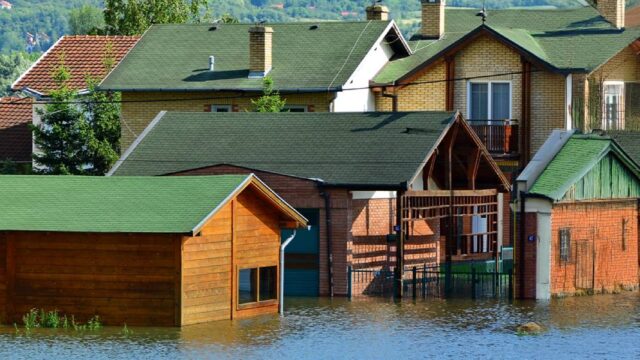How to floodproof your house
It's not entirely possible to floodproof your home, but you can take steps to reduce the potential damage.

With climate change and resultant weather changes currently being experienced and the fact that one does not live in a vacuum, it is not possible to eliminate the risk of flooding in one’s house.
But with the following tips one can reduce the risk of water getting into the house and reduce the impact if it does get in.
What to do outside the house:
• Install a rain tank, which is a sustainable way to deal with rainwater. Rain tanks are usually connected to gutters and downspouts, which collect rainwater from roofs.
• Water should always drain away from the house, and to achieve this, you can dig small depressions to properly channel water and work on the surface around the house so that it slopes away.
• Ensure that internal and external drains in and around the house are clear of debris and function properly.
• Create natural green areas around your home that allow more water to be absorbed into the ground, reducing the chances of flooding.
• Ensure that water and electricity meters, generators, air conditioning vents, and any other utilities and service equipment kept outside are elevated.
• Outdoor water tanks should be elevated and additionally attached to a concrete slab to minimise the chances of a freak accident.
What to do inside the house:
• Seal any cracks in floors, roofs, and walls with waterproofing compounds to prevent seepage. Also, make sure any floor drains are clear of obstructions.
• Regularly check to ensure the floor drains are clear of obstructions.
• Install flood vents, which are small permanent openings that allow floodwater to flow freely through an enclosure, thus preventing water pressure buildup that causes damage.
• Install backflow valves for all pipes entering the building so that water flows only one direction, preventing floodwater and wastewater from backing up into your home through toilets, sinks, etc.
• Go for water-resistant building materials like ceramic tiles, vinyl, rubber, lime plaster, cement board and concrete. Use more moveable fittings and make doors and window frames with metal.
• Electrical system components and electrical appliances should be raised as high as possible from the ground.
• Take advantage of the Internet of Things and install sensors that can alert you to flooding and enable you to act before extensive damage occurs.
How to stay ready for floods
• Buy flooding insurance to cover the contents of the house in case of water flooding.
• Do your due diligence to ensure the area is not prone to flooding before renting, buying, or constructing a house.
• Consider storing important documents and other valuable or sentimental items in a safer location, like a bank vault or inside watertight containers if they are in your house.
• Undertake regular maintenance of your house to check on drain flows, cracks, etc.
• Engage the local government and/or the estate management to ensure that the communal drains are constantly maintained.
